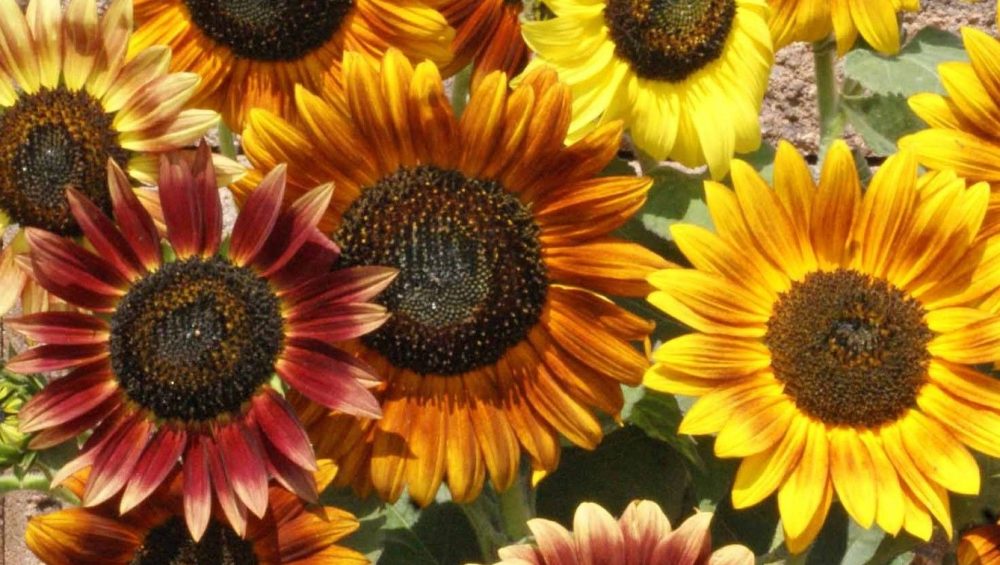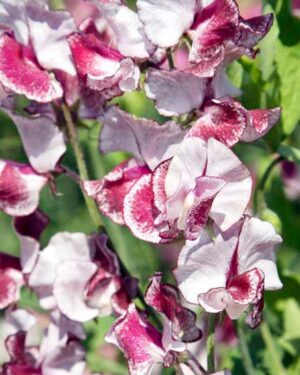Description
SUNFLOWER – AUTUMN BEAUTY SEEDS
SUNFLOWER – AUTUMN BEAUTY SEEDS is a stunning mix of warm earthen shades of large multi-headed 4 to 8 inch blossoms on 6-8’ strong stemmed plants. Makes an ideal cut flower as well as an ideal background planting for borders in the garden. Autumn Beauty colours are a mixture of reds, browns, mahogany, orange & gold.
Cultivation advice
- Choose a well-draining soil with good fertility. Amend the soil with organic matter like compost or well-rotted manure before planting to enhance its nutrient content and structure.
- Plant Autumn Beauty sunflower seeds in late spring or early summer when the soil has warmed up and there’s no longer a risk of frost. Select a spot that receives full sunlight for most of the day.
- Sow the seeds directly into the ground at a depth of about 1 inch (2.5 cm) and space them around 6 to 12 inches (15 to 30 cm) apart, depending on the variety and available space.
- Keep the soil consistently moist but not waterlogged after planting until the seedlings establish themselves. Once established, sunflowers are somewhat drought-tolerant but benefit from regular watering during dry spells.
- Apply organic mulch around the base of the plants to retain moisture, regulate soil temperature, and suppress weeds. Pull out weeds regularly by hand to prevent them from competing with the sunflowers for nutrients
- Use organic fertilizers like compost tea or fish emulsion to provide additional nutrients to the soil. Apply these fertilizers sparingly and follow package instructions to avoid over-fertilizing.
- Some varieties of Autumn Beauty sunflowers can grow quite tall and might require support to prevent them from falling over in strong winds. Staking or using trellises can help support taller plants.
- Monitor for pests like aphids or caterpillars. Use organic pest control methods such as neem oil or insecticidal soap if infestations occur. Additionally, proper spacing and good air circulation can help prevent diseases like powdery mildew.
- Deadhead spent flowers regularly to encourage continuous blooming and prevent the plant from using energy on seed production. You can also prune to control the size and shape of the plant if needed.
- If you wish to harvest seeds for future planting or for bird feed, allow the flower heads to mature and dry on the plant. Harvest the seeds once the back of the flower head turns brown, and the seeds become loose and easy to remove.
- Sunflowers, especially those with large flower heads like Autumn Beauty, attract pollinators such as bees and birds. Consider leaving some seeds on the plant to provide food for wildlife in your garden.
- Pair Autumn Beauty sunflowers with companion plants like marigolds, zinnias, or cosmos. These companion plants can attract beneficial insects, deter pests, and add diversity to your garden.
- While sunflowers are commonly grown in garden beds, some smaller or dwarf varieties of Autumn Beauty sunflowers can thrive in large containers. Ensure the containers have good drainage and sufficient space for root growth.
- Sunflowers prefer slightly acidic to neutral soil (pH 6.0 to 7.5). Perform a soil test to check the pH level and adjust it if necessary using organic amendments like lime or sulfur.
- Consider planting sunflower seeds in intervals, creating a staggered bloom time. This approach ensures a continuous display of flowers throughout the growing season.
- In colder climates, sunflowers are usually grown as annuals. However, if you want to attempt overwintering, leave the flower heads on the plant during fall to provide seeds for birds, and cut back the plant after the first frost. Apply mulch around the base for winter protection.
- To save seeds for future planting, ensure the harvested seeds are fully dry. Store them in a cool, dry place in labeled envelopes or containers. Properly stored sunflower seeds can remain viable for planting for several years.
- To encourage the growth of multiple stems and therefore more flowers, consider pinching off the central stem when the plant is around 12 inches (30 cm) tall. This encourages lateral growth.
- By growing Autumn Beauty sunflowers organically, you contribute to a diverse and healthy garden ecosystem. Encourage a variety of pollinators and beneficial insects by providing a range of flowers and habitats.
- Sunflowers, with their vibrant colors and large blooms, can be a fantastic addition to community gardens or shared spaces. Consider involving neighbors or a local community in cultivating these cheerful flowers for a shared aesthetic and environmental benefit.









Reviews
There are no reviews yet.